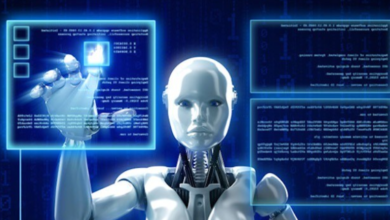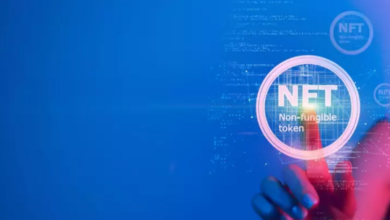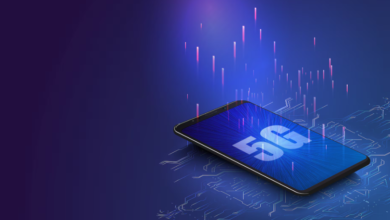The Role of Virtual Reality in Education: What’s Next?

1. Introduction
The landscape of education has always been evolving, but with the advent of cutting-edge technologies like Virtual Reality (VR), the transformation is more profound than ever before. Virtual Reality allows learners to step into an immersive environment, where they can engage with content in ways that were previously unimaginable. As VR becomes more accessible and affordable, it is poised to revolutionize the way students learn and interact with knowledge.
In this article, we explore the growing role of Virtual Reality in education, its current applications, benefits, challenges, and what the future holds for this immersive technology in the classroom.
2. What is Virtual Reality (VR)?
Virtual Reality (VR) is a computer-generated simulation that immerses the user in a 3D environment. It typically requires specialized hardware such as VR headsets, gloves, or motion trackers, allowing users to interact with and navigate through a virtual space. VR creates a sense of presence, making users feel as though they are physically inside the virtual environment, which makes it an ideal tool for education.
See also: Blockchain Beyond Cryptocurrency: Key Applications You Should Know
3. How Virtual Reality is Transforming Education
Immersive Learning Experiences
One of the most powerful aspects of VR in education is its ability to create immersive learning experiences. Rather than just reading about history or viewing diagrams of a molecule, students can travel to ancient civilizations or explore the inner workings of a cell, all through the power of VR. This approach enhances understanding by making abstract concepts tangible and engaging.
Enhanced Student Engagement
Virtual Reality has the potential to significantly boost student engagement. Traditional teaching methods can often feel monotonous and disengaging for students, but VR offers a new level of interaction. When students actively participate in a learning experience, their attention is captured and their motivation increased. This can be especially helpful in subjects that students find difficult or boring.
Virtual Classrooms and Remote Learning
In the wake of the COVID-19 pandemic, virtual classrooms became a necessity, and VR offers a more advanced version of online learning. With VR, students can attend classes in a virtual environment, interact with their peers and instructors, and participate in group activities, making remote education more interactive and engaging.
4. Applications of VR in Various Educational Fields
STEM Education
STEM (Science, Technology, Engineering, and Mathematics) education benefits greatly from VR because it allows students to explore complex scientific concepts and experiments without the need for physical labs. For example, students can conduct experiments in a virtual lab or explore space and the universe, helping them to visualize concepts that are difficult to grasp through textbooks alone.
Medical Training
One of the most profound uses of VR is in medical education. Medical students can practice surgeries, diagnose conditions, and explore human anatomy in a risk-free virtual environment. This hands-on approach can enhance skill development and improve patient care by providing future healthcare professionals with more realistic training.
History and Social Studies
History and social studies come alive in VR, where students can virtually visit historical sites or witness important events unfold in real-time. This not only increases engagement but also deepens students’ understanding of complex historical narratives by providing experiential learning opportunities.
Language Learning
VR is also transforming language learning. Students can immerse themselves in virtual environments where they must use the language to navigate the world around them. This practice enhances language acquisition by providing context and real-world scenarios, making the learning process more dynamic and memorable.
5. Advantages of Virtual Reality in Education
Active Learning and Retention
Active learning, where students interact with content rather than passively receiving information, has been proven to improve retention. VR promotes this by immersing students in interactive environments, allowing them to learn by doing.
Increased Accessibility
VR offers a new level of accessibility in education. Students with disabilities, for example, can participate in virtual field trips or lab exercises, which might otherwise be inaccessible due to physical limitations. Additionally, VR allows for personalized learning experiences, catering to individual learning needs.
Personalized Learning Experience
With VR, students can learn at their own pace, exploring concepts in more depth or revisiting lessons as needed. This is particularly beneficial for students who might struggle with traditional learning methods, as VR can provide a more tailored approach to education.
6. Challenges and Barriers in Implementing VR in Education
Cost of Technology
The cost of VR hardware and software is one of the biggest barriers to widespread adoption in schools. While prices have decreased over the years, high-quality VR setups can still be expensive, limiting their use to well-funded institutions.
Technical Limitations
While VR technology has come a long way, there are still technical challenges. Latency, motion sickness, and the need for high-powered computing devices can hinder the effectiveness of VR learning. Ensuring that the technology works seamlessly is crucial for it to become a mainstream educational tool.
Teacher Training and Adaptation
For VR to be effective in the classroom, teachers need proper training on how to use the technology. Adapting to new teaching methods and integrating VR into lesson plans can be a daunting task for educators who are used to traditional methods.
7. Future Trends in VR for Education
AI Integration with VR
The integration of Artificial Intelligence (AI) with VR will enhance learning experiences by making them more personalized. AI can track a student’s progress, adapt learning materials to their needs, and provide real-time feedback, allowing for more effective and efficient learning.
Collaboration and Social Learning in VR
As VR technology continues to improve, students will be able to collaborate in real-time within a virtual classroom. This opens up possibilities for group projects, peer interactions, and collaborative learning, no matter where the students are physically located.
Global Virtual Classrooms
In the future, VR has the potential to create global classrooms where students from different parts of the world can meet, interact, and learn together. This global approach to education could foster cultural exchange, enhance global awareness, and provide students with a more diverse educational experience.
8. Case Studies: Successful Integration of VR in Schools and Universities
Many educational institutions are already using VR to enhance learning. For instance, the University of Illinois uses VR to teach complex engineering concepts, while Arizona State University is using VR for virtual field trips in archaeology. These case studies show the vast potential of VR to transform education across various disciplines.
9. The Ethical and Psychological Implications of VR in Education
While VR provides numerous benefits, there are ethical and psychological concerns to consider. Prolonged use of VR can lead to issues such as addiction, social isolation, and over-reliance on technology. Educators must be mindful of these risks and ensure that VR is used in moderation and as a complementary tool to traditional teaching methods.
10. Conclusion
Virtual Reality is reshaping the educational landscape, offering students immersive, interactive, and personalized learning experiences. While challenges remain, particularly with regard to cost and technology limitations, the potential for VR in education is immense. As the technology advances, we can expect to see even more innovative applications that will continue to enhance education worldwide.
11. FAQs
1. How does Virtual Reality enhance student learning?
Virtual Reality enhances learning by providing immersive, hands-on experiences that help students understand complex concepts through direct interaction.
2. Is VR effective for all types of education?
While VR is highly effective in fields like STEM, medicine, and history, it can be beneficial in most educational settings, though its implementation depends on the subject matter and resources available.
3. What are the biggest challenges in using VR in education?
The major challenges include the high cost of technology, technical limitations, and the need for teachers to be adequately trained in using VR tools.
4. Can VR replace traditional classrooms?
While VR is a valuable tool for enhancing education, it is unlikely to replace traditional classrooms. Instead, it will supplement traditional methods to provide a more diverse learning experience.
5. How can VR be used for remote learning?
VR can simulate virtual classrooms, allowing students to interact with teachers and peers in a more immersive and engaging way than traditional video calls or webinars.
6. What does the future hold for VR in education?
The future of VR in education looks promising with advancements in AI, global classrooms, and new immersive learning tools. As technology continues to evolve, VR’s role in education will expand significantly.



